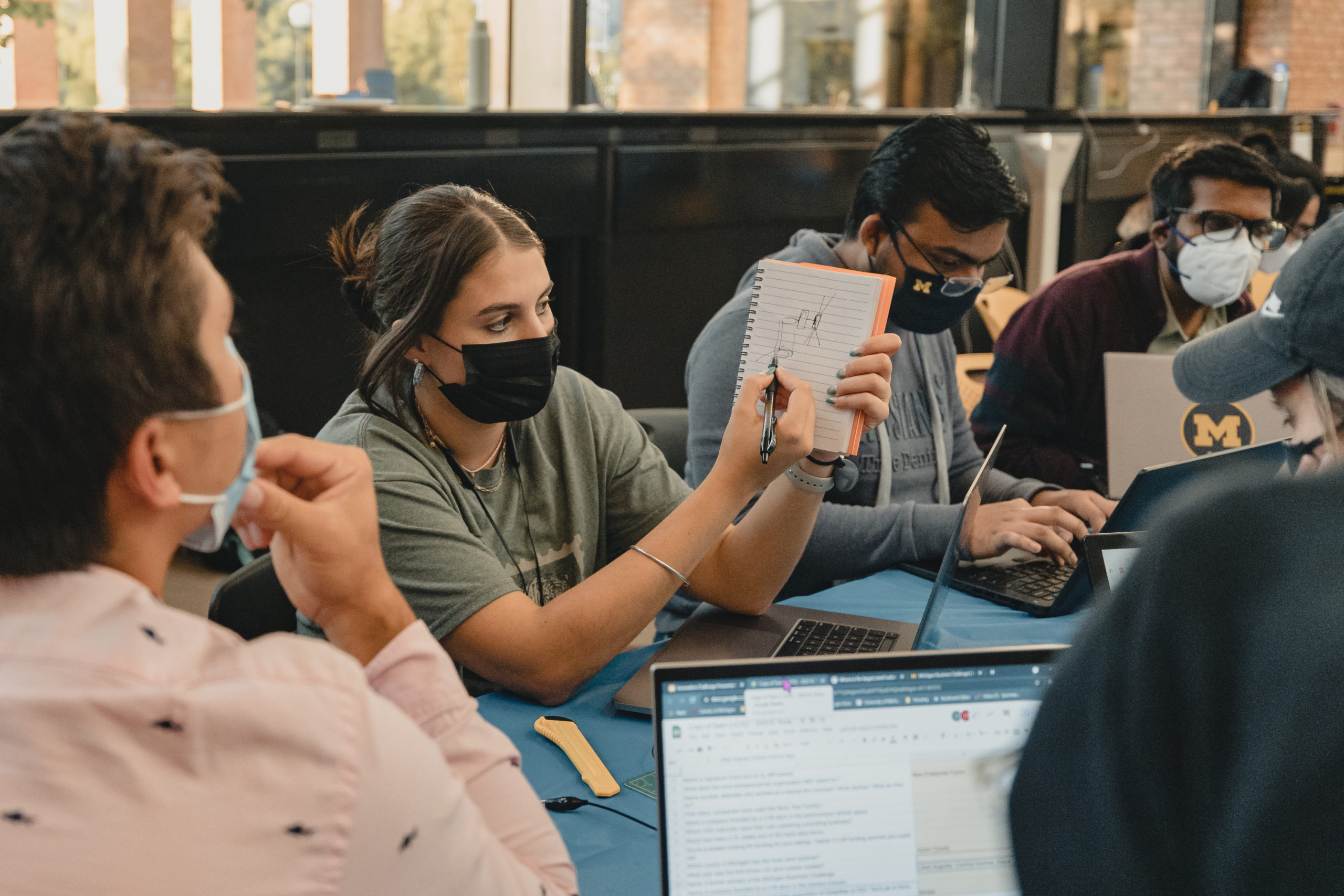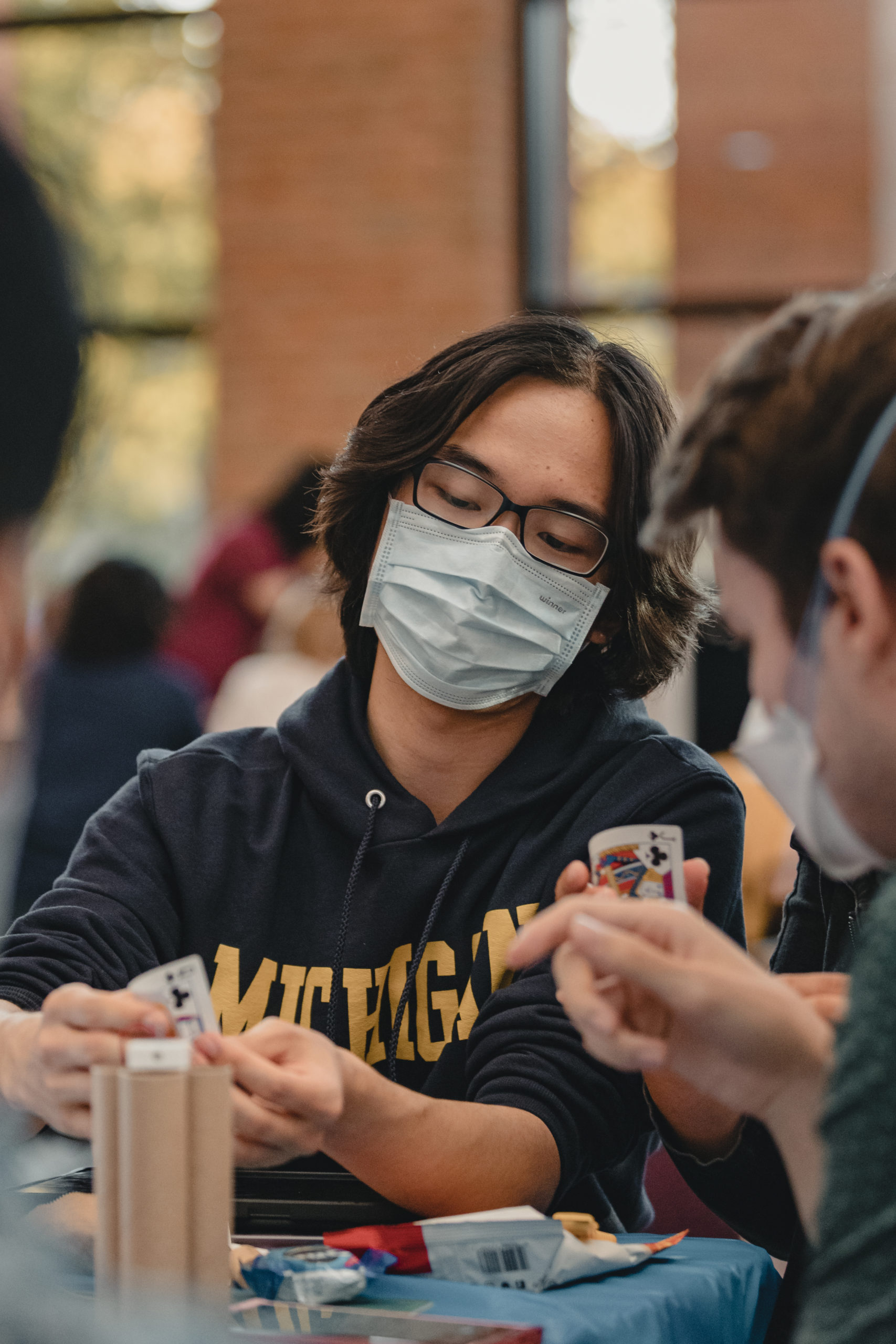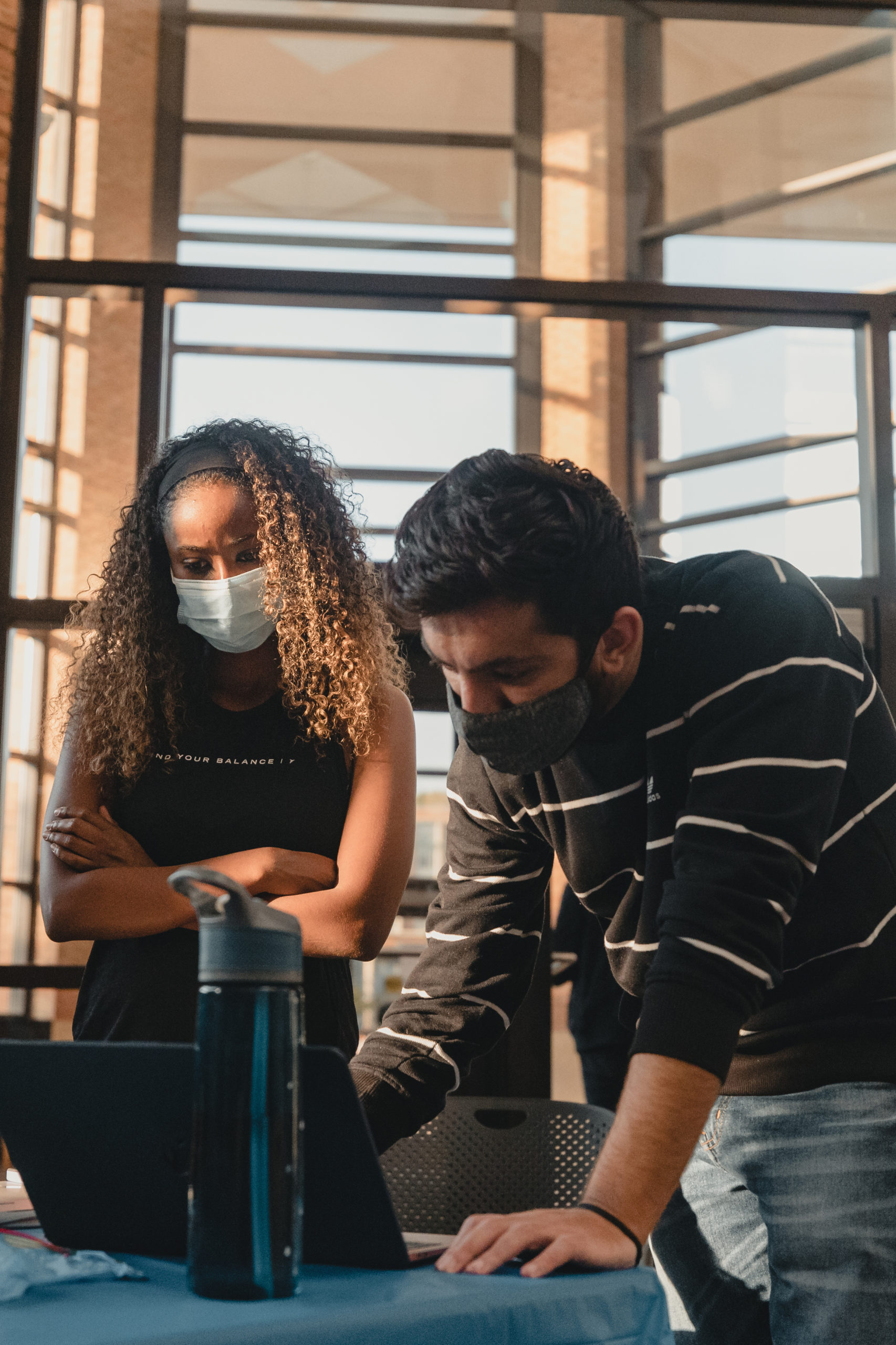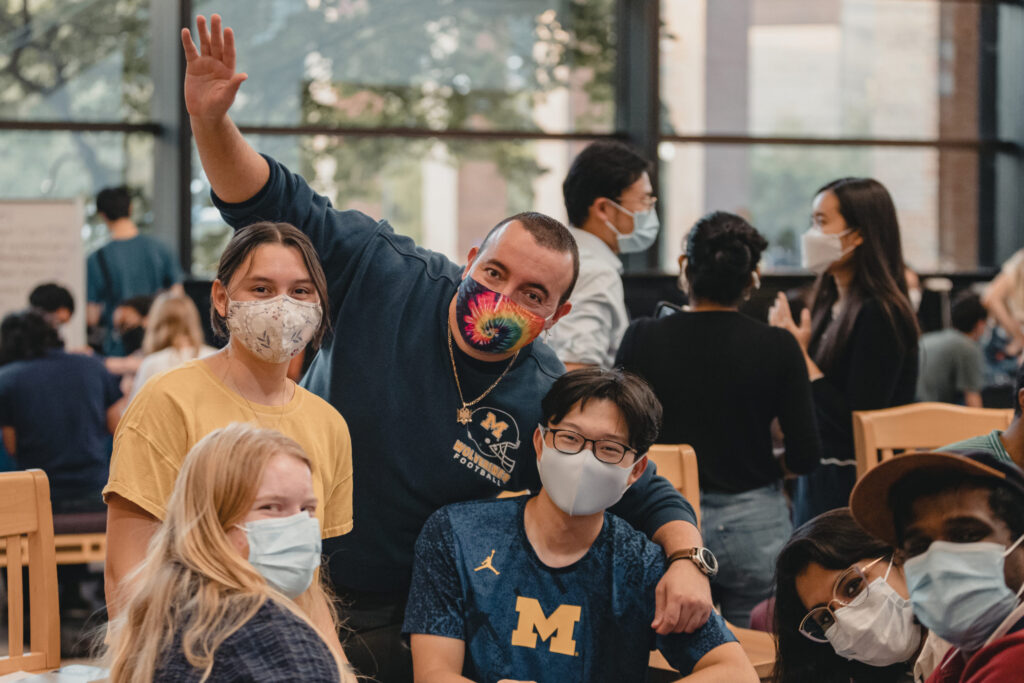More than 150 students, hailing from 14 schools and colleges at U-M, participated in the Center for Entrepreneurship’s annual Innovation Challenge on September 27 on the main floor of the Duderstadt Center on North Campus.
 Each year this event invites students to team up, strategize, design, build, and present a solution to an engineering challenge using an entrepreneurial mindset. The event is also positioned as one of the CFE’s most effective recruiting tools for the co-curricular programs; the Entrepreneurs Leadership Program and TechLab at Mcity.
Each year this event invites students to team up, strategize, design, build, and present a solution to an engineering challenge using an entrepreneurial mindset. The event is also positioned as one of the CFE’s most effective recruiting tools for the co-curricular programs; the Entrepreneurs Leadership Program and TechLab at Mcity.
The annual event’s theme is always connected to a global and societal challenge, and for this year the students addressed climate change by creating renewable energy sources. The goal for the challenge was for students to answer trivia questions associated with wind power, the co-curricular programs, and entrepreneurial alumni, then to use the points from correct answers to purchase materials to build a small wind turbine.
 Students were organized into teams of four to six and had 75 minutes to answer trivia, design, and construct their turbines. Each team was provided with some tools and a small DC motor. At the end of the 75 minutes, each of the 30 teams placed their creation in front of a fan and connected their motor to a multimeter to determine the maximum voltage produced.
Students were organized into teams of four to six and had 75 minutes to answer trivia, design, and construct their turbines. Each team was provided with some tools and a small DC motor. At the end of the 75 minutes, each of the 30 teams placed their creation in front of a fan and connected their motor to a multimeter to determine the maximum voltage produced.
“The Innovation Challenge is always a highlight of the fall semester,” said Nick Moroz, Director of Entrepreneurial Practice at the CFE. “The need for students to quickly team up, delegate, design, and execute showcases their entrepreneurial mindsets. The diversity of students, their varied expertise and backgrounds, makes this a very special event that always produces impressive prototypes, and sometimes they even work.”
Two prizes were awarded: $400 to the team that produced the highest DC voltage and $400 to the team that produced the most cost-effective voltage (maximum voltage divided by total cost of materials purchased). Teams could create a system using only one motor, or utilize multiple motors which they could purchase to maximize voltage in a series circuit configuration.
 The award for maximum voltage produced went to Shaivi Ganatra (MSI Information, ‘22), Mohit Thakur (MSE Automotive and Manuf. ‘22), Amit Chopde (MSE Battery Tech., ‘22), and Rohit Damodar (MSE Electrical and Computer Science Engineering, ‘22) who produced a very impressive three turbine structure.
The award for maximum voltage produced went to Shaivi Ganatra (MSI Information, ‘22), Mohit Thakur (MSE Automotive and Manuf. ‘22), Amit Chopde (MSE Battery Tech., ‘22), and Rohit Damodar (MSE Electrical and Computer Science Engineering, ‘22) who produced a very impressive three turbine structure.
The most cost-effective voltage was produced by Myla Lyons (BA Biopsychology, Cognitive Science, ‘23), Zach Goldberg(MBA Business, ‘23), Emily Wang (BBA Business, ‘22), Rania Uppal (BS Computer Science, ‘24), and Ava Mauser (PhD Biomedical Engineering, ‘23) who utilized playing cards for the entire structure of their contraption.
“The reality that five strangers, all different ages and majors, could come together and create a winning design reminds me of why I am pursuing engineering at Michigan,” said Rania Uppal. “I have the opportunity to build connections with people outside of my immediate circle and participate in activities like the Innovation Challenge that work to strengthen and grow my creative thinking skills.
 “The pride that I felt for my team at the end of the challenge sticks with me, not just because of the competition results but instead because of our successful collaboration and problem-solving.”
“The pride that I felt for my team at the end of the challenge sticks with me, not just because of the competition results but instead because of our successful collaboration and problem-solving.”
This was the largest turnout for an on-campus event for the CFE in recent memory. Students commented that they enjoyed the chaos, camaraderie, and entrepreneurial themes through the challenge.
“I would encourage everyone to attend the next Innovation Challenge,” said participant Ava Mauser. “You never know who you will meet, the connections you will develop, and how it can propel you forward into additional opportunities.”

